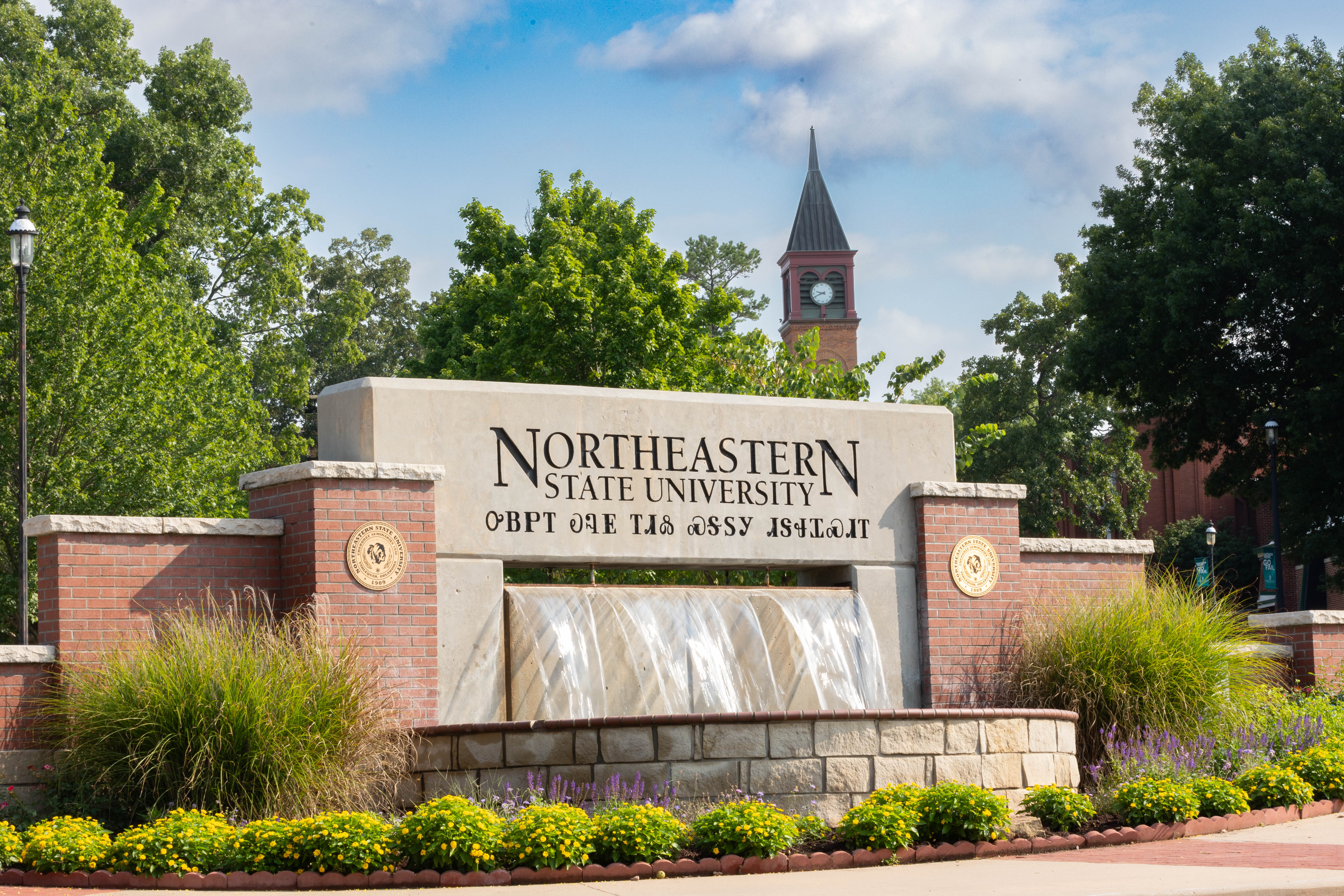NSU Limnology students engage in freshwater quality research
Northeastern State University Limnology students engage in freshwater quality research to promote public awareness
TAHLEQUAH, Okla. – This fall, 14 undergraduate students enrolled in a limnology class at Northeastern State University participated in a research project designed to promote public awareness and improve the health of Town Branch, a 6.21-mile spring-fed stream flowing through Tahlequah, Oklahoma.
The research project was completed using Blue Thumb, a statewide citizen science program. Using this method, students were able to contribute efforts aimed at monitoring and improving the quality of local freshwater resources.
“The idea for this research project stems from the need to understand and monitor the health of Town Branch, an important natural resource in Tahlequah,” Cheyanne Olson, NSU assistant professor of biology, said. “The stream plays a vital role in the local ecosystem, providing water quality benefits and serving as a natural feature for the community.”
Olson, a new professor at NSU, wanted to find ways to connect students to the nature around them and help them realize the vital resources are just within walking distance of main street.
“I believe that doing science is the best way to learn science,” Olson said.
By providing students with immersive learning opportunities, students can directly apply their academic knowledge to real-world situations. With opportunities like these, students are also nurtured into a path of being advocates in the local effort to protect water quality and ecosystem health, fostering critical-thinking, problem-solving and data analysis skills, Olson said.
Olson structured the class to include several projects in an effort to promote public education and awareness of the waterway’s health. The class was mostly composed of juniors and seniors majoring in Organismic Biology, Fish and Wildlife and Freshwater Sciences.
For the project, students split up into four groups and utilized different social methods to provide information to the public.
Group one, composed of Gavin Caldwell, Billy Cantrell, Coltin Knappe, and Parker Varble, created an informative flyer featuring the common fish species found in Town Branch, such as Bluegill sunfish, creek chubs and southern redbelly dace. This flyer highlights the changing dynamics of the fish population, noting an increase in tolerant species and a decrease in sensitive, or intolerant species. Olson said these are indicators of changes in water quality.
Group two, Seth Thibodeau, Riley McCafferty, and Cale Ingle, developed a website that features data collected by Blue Thumb volunteers in 2017 and offers a detailed analysis of the stream’s habitat quality. Student findings can be found at www.knowmystream.com/.
Group three, Josie Moore, Courtney Huckbay, Wade Etter, and Walker John, created a Facebook page called Flowing Clean Tahlequah, in an effort to educate the public about water quality, share their findings and create conversations with locals. This page focuses on key water quality parameters like dissolved oxygen, pH levels and nutrient concentrations.
Group four, AJ Fields, Kirston Heytz, Rachael Croley, and Kilee Colclasure, created a TikTok account, @Stream_Queens, where they shared short, fun and educational videos about macroinvertebrates – small aquatic creatures that play a significant role in stream ecosystems. This group also developed a pamphlet to distribute to local schools, raising awareness about these invertebrates and their connection to stream health.
“My hope is to continue experiences like this in future freshwater courses, like stream ecology, to draw in new students who are interested in Oklahoma’s water resources,” Olson said.
Olson said she looks forward to continuing the project through the spring semester in order to compare data. She said restoration efforts and ongoing monitoring are crucial for mitigating pollution, improving water quality and supporting the stream’s ecological integrity in the face of urban growth.
“The findings these students provided are exciting and demonstrate the power of education and collaboration,” NSU President Rodney Hanley, said. “Their work underscores NSU’s commitment to fostering immersive learning opportunities through student engagement and community partnerships.”
Local citizens interested in exploring local water conditions monitored by Blue Thumb volunteers can visit, https://www.bluethumbok.com/explore-blue-thumb-data.html for a look at interactive maps and streams.
For more information about additional opportunities at NSU, visit Go2NSU.com.
###


